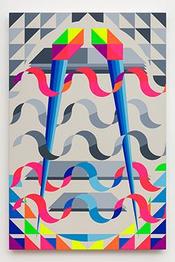Art Movements
Color Theory
Color Theory, in art and design, refers to a set of principles and guidelines for working with color that includes pure colors (hues), their values, mixing and the perceptual effects of color. A complex topic with many different theories and the earliest color wheel from Sir Issac Newton. Most of the impact on Post War contemporary art is that derived from theorists and educators such as Johannes Itten (1888-1967) and his and publication of The Art of Color; Hans Hofmann (1880-1966) and his “push and pull” technique to use color and shapes to create the illusion of space, depth and motion in a two-dimensional picture plane; and Josef Albers (1988-1976) and the Interaction of Colors (Yale University Press).
There is a group of contemporary color theorists from Hunter College in New York City who have dedicated their careers to categorizing thousands of colors and developing their own color systems for understanding the affect of color on the human psyche and the sensations that color in terms of human emotions. These artists include Sanford Wurmfeld, Robert Swain and Gabriele Evertz.
Some basic terms and definitions:
Color - The property of an object based on the light it reflects or emits and that the eye receives.
Color wheel - color spectrum from light bent into a circle.
Primary colors - The most basic colors on the color wheel, red, yellow and blue. These colors cannot be made by mixing.
Secondary colors - colors that are made by mixing two primary colors together. Orange, green and violet.
Tertiary colors - colors that are made by mixing a primary color with a secondary color.
Hue - the name of a pure color.
Chroma - a color's purity, intensity or saturation, the brightness or dullness of a color.
Value - the darkness or lightness of a color.
Tints - are created by adding white to a color.
Shades - are created by adding black to a color.
Additive color theory - a school of thought that refers to the behavior of color as it pertains to light - primary colors mix to create white light.
Subtractive color theory - refers to the behavior of color as it pertains to the mixing of pigments like ink, paint, or dye - primary colors mix to create black.

 Isaac Aden
Isaac Aden
 Thomas Downing
Thomas Downing
 Gabriele Evertz
Gabriele Evertz
 Christian Haub
Christian Haub
 Andrew Huffman
Andrew Huffman
 Matthew Kluber
Matthew Kluber
 Mokha Laget
Mokha Laget
 Oli Sihvonen
Oli Sihvonen
 Robert Swain
Robert Swain
 Sanford Wurmfeld
Sanford Wurmfeld























